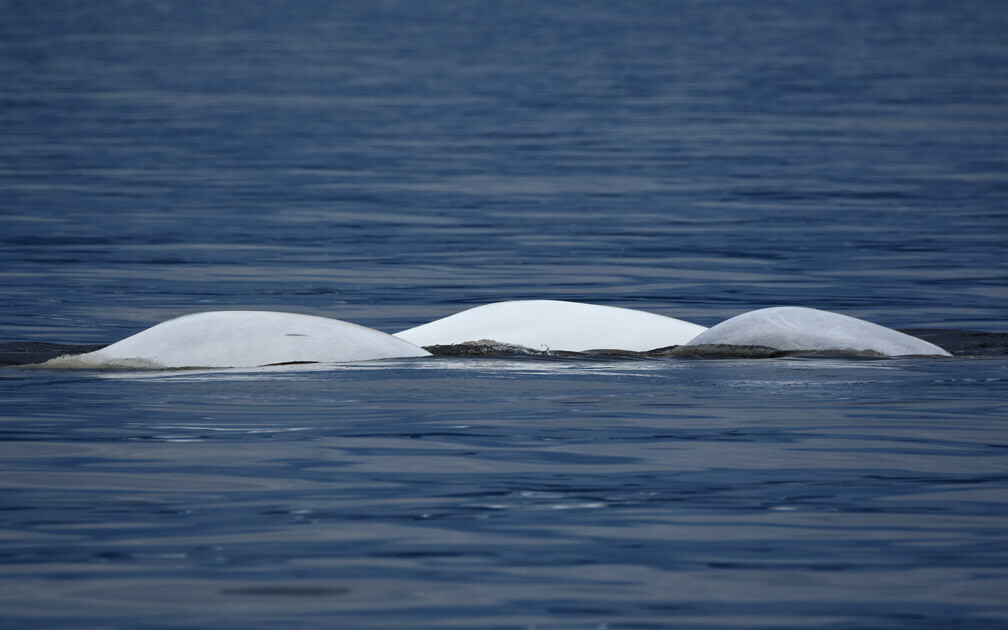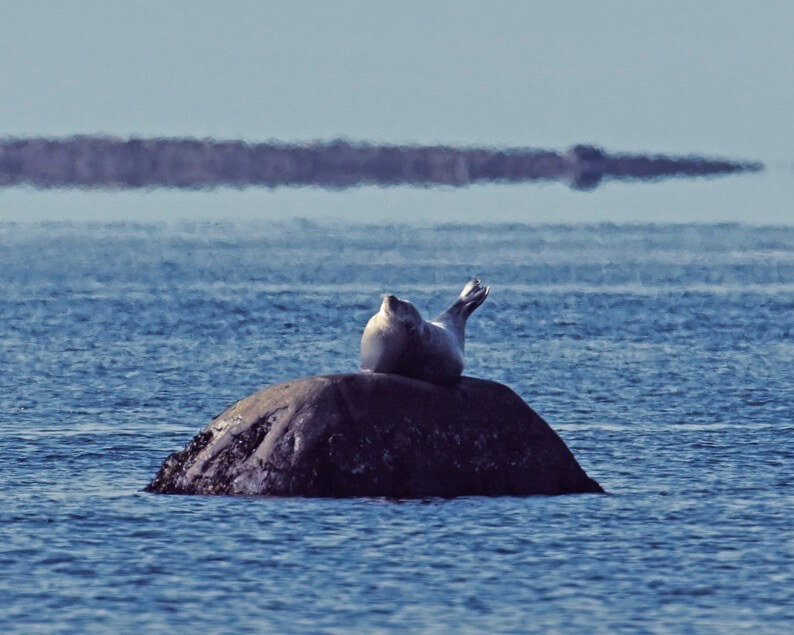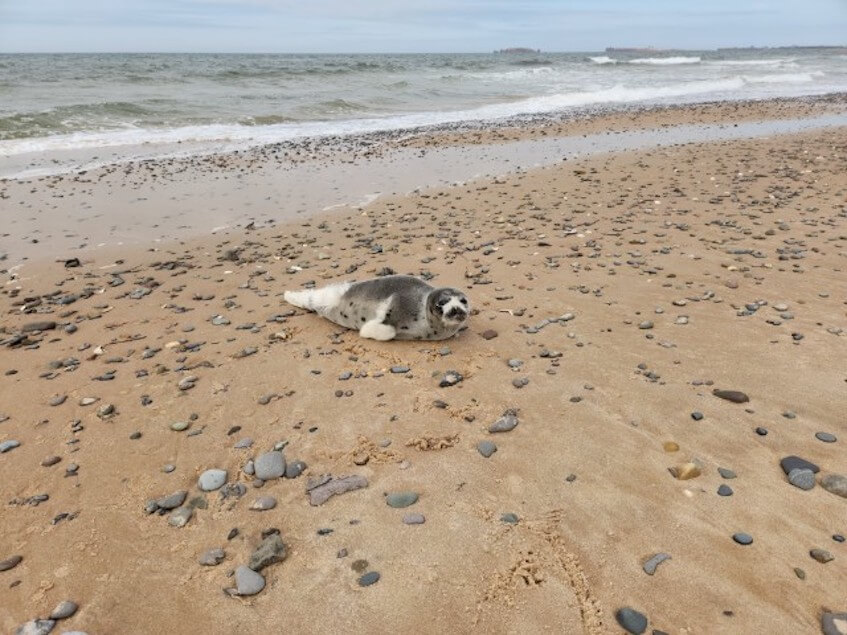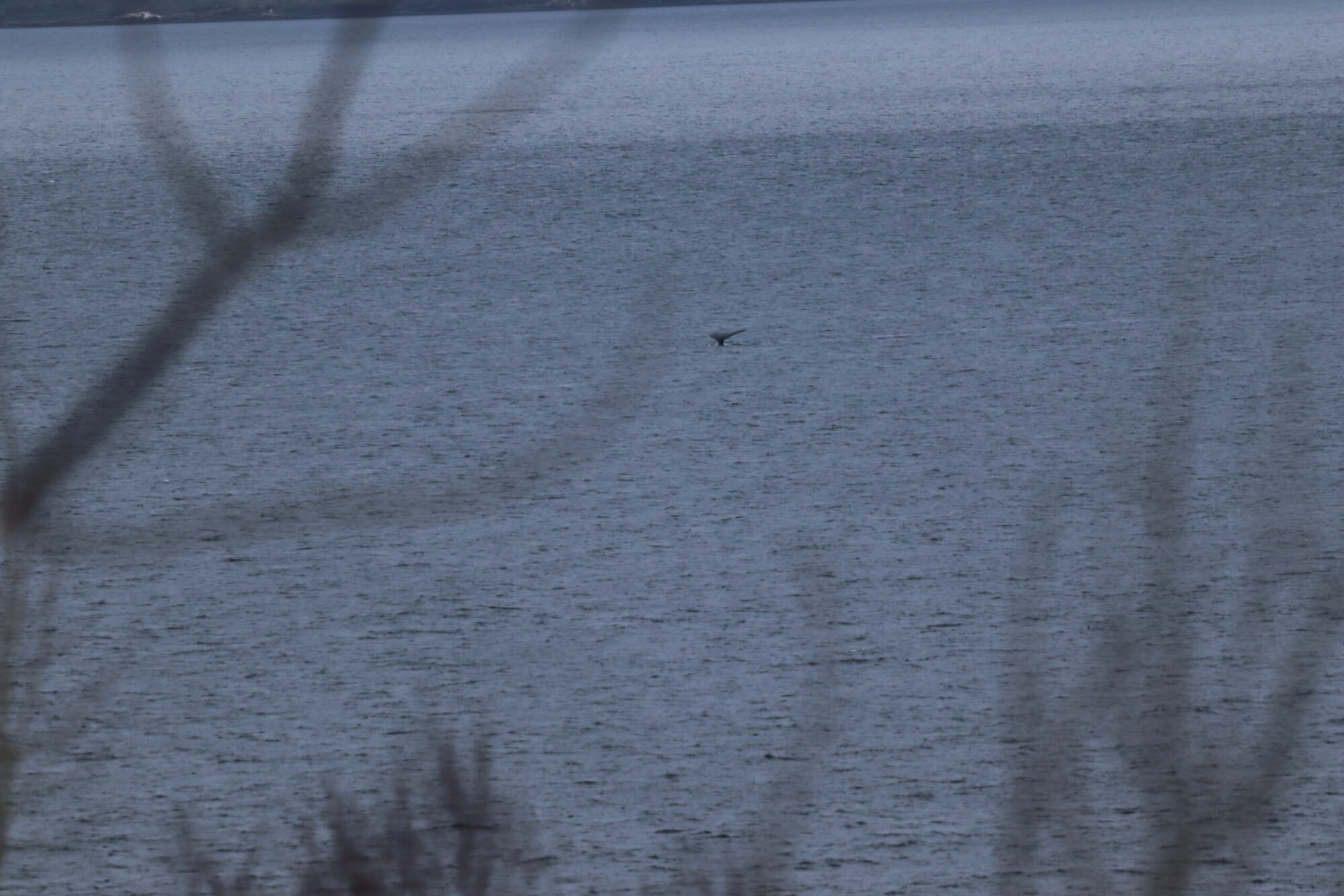This past week in the St. Lawrence, strong winds, inclement weather and rough seas did not make easy to observe marine mammals. However, this didn’t prevent seals from resting near the shoreline or even a humpback from making an appearance. The presence of a group of belugas discreetly moving up the St. Lawrence marks the return of these white whales to the estuary and, at the same time, the arrival of spring!
Fauna in all its diversity
In Tadoussac, a minke whale was seen swimming in the bay on a few occasions. Word quickly gets around the village, but not everyone is lucky enough to see it. Although the seasonal migrations of this species are not well understood, this small baleen whale generally returns to the area beginning in March. In the coming weeks, large numbers of minke whales are expected to return to feed in the St. Lawrence.
On April 3, a member of the pinniped family approaches the shore. “We saw a harbour seal! exclaims a marine mammal enthusiast.
At Cap de Bon-Désir in Les Bergeronnes, another harbour seal rests quietly on a rock while a bald eagle soars over the river and a group of common eiders bobs across the water nearby. This is coastal wildlife in all its splendour!
A matter of luck
In Gaspé Bay, a veteran hiker hasn’t had the chance to see marine mammals in a long time. Her gaze then turns to the birds. “Both the ‘bustards’ and the brant have arrived!” This is sometimes confusing, but in reality, there are no bustards in North America. Rather, the term outardes is often used by French speakers when they are referring to Canada geese. Bustards, on the other hand, are native to Europe, Asia, Africa and Australia.
In the same general area, one cetacean enthusiast is a little luckier. She reports what is unfolding before her eyes: “Humpback sighted off Cap-aux-Os. In fact, it’s still here as I’m writing to you!” Humpbacks are leaving their winter breeding grounds and heading to the St. Lawrence, where they will forage all summer long. While some individuals are slowly beginning to return to the gulf, others are still lingering in more temperate waters. Last week, the 2021 calf of Gaspar, a well-known humpback in the St. Lawrence, was spotted in the Caribbean!
On the north shore of the river, at Pointe-aux-Outardes, a group of belugas is working its way up the estuary. Could these gregarious animals be on their way back to their summer range? Might it be possible to predict the return of mild weather based on the migratory movements of whales? In any case, the idea is no more far-fetched than observing the behaviour of a groundhog!
Share your observations!
Have you seen any marine mammals in the St. Lawrence? Whether it’s a spout offshore or just a couple of seals, drop us a line and send your photos to [email protected]!








